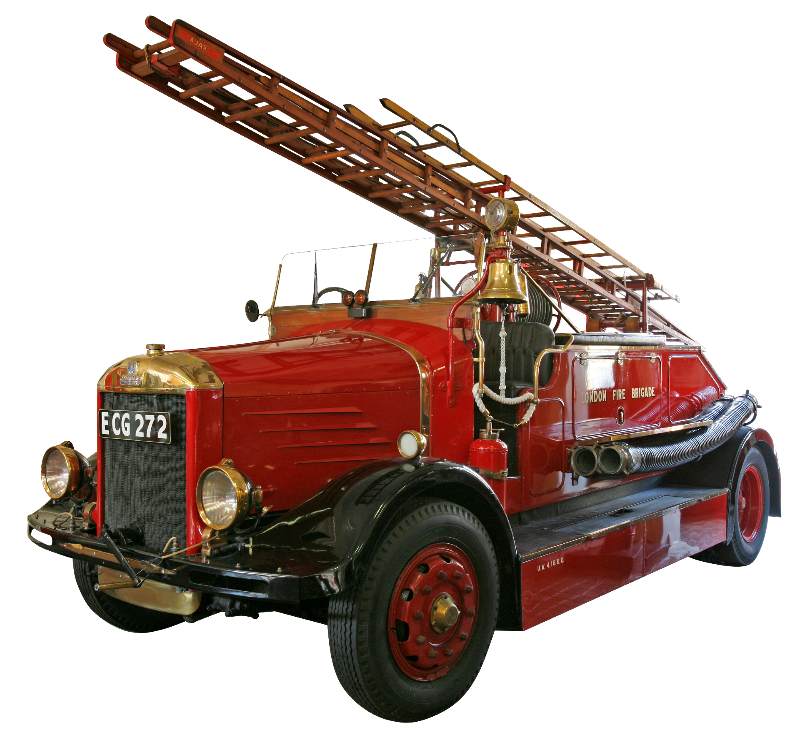
Origins
In 1967 a vehicle was brought into the Brigade’s Ruislip Workshops and stored in quiet corner out of the way.
This was shortly to become not only a restoration challenge for a team of eager apprentices, but later a valued part of the London Fire Brigade Museum’s collection. This is the Dennis ‘Big 4’ Braidwood-Bodied Fire Engine Pump.
Did you know?
The turbine pump at the rear of the vehicle was able to pump up to 700 gallons of water per minute.
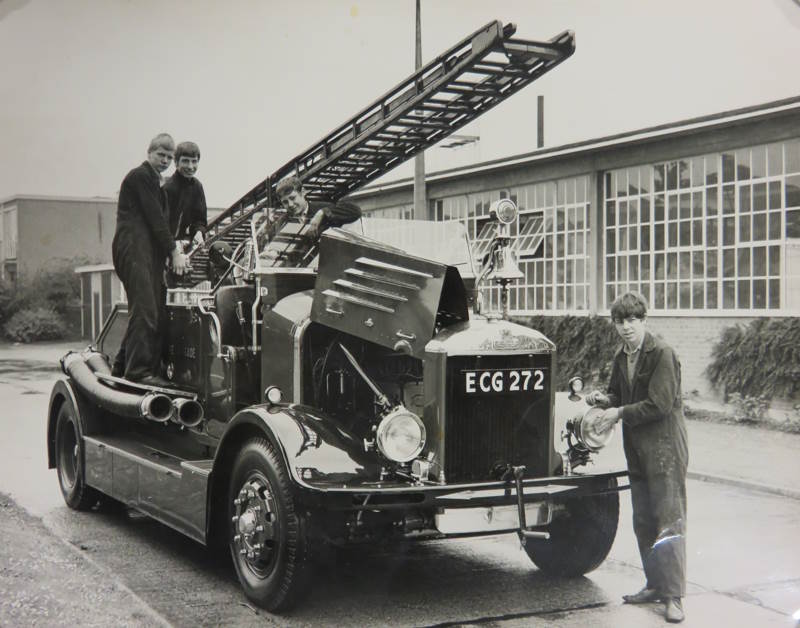
The apprentices get involved
In 2022 we recorded the memories of some of the former apprentices, Bob, Terry and Ian, who worked on the ‘Braidwood’, also known as ECG 272 (its registration number). Here are some of their stories...
Bob, Terry and Ian joined between 1966-68 and their apprenticeships were all initially 5 year long. They were all based at the South Ruislip Workshops, which supported the maintenance of vehicles and equipment north of the River Thames.
The other Brigade workshop, based behind Lambeth Fire Station, also ran similar apprenticeship schemes at that time.
Image: (From left to right) Ian T, Ian B, Terry and Bob outside the Ruislip Workshops in 1960s. Image given to the Museum by Ian T.
The apprenticeship types
When the apprentices joined there were two options - a mechanical apprenticeship or a coach building apprenticeship.
The coach building apprenticeship was focused on working on the body of the vehicle, while the mechanical apprenticeship covered elements including the engine and electrical systems.
Around four new mechanical apprentices joined each year, and up to 20 apprentices made up the full team.
Here the former apprentices share their experiences.
Restoring the vehicle
We think that the vehicle had been previously used by a brewery company, possibly Fullers, before it arrived in the workshop in around autumn 1967. It was probably chosen for restoration because it was still a running vehicle even though it was in poor condition. This would present a positive challenge for both the mechanical and coach building apprentices.
All three of the former apprentices began working on the Dennis ‘Big 4’ when the restoration began in 1967. The goal of the project was to build up their various skills, and they were each assigned to, and guided by, a professional mentor at the workshop.
Did you know?
The crew of firefighters sat facing outwards on this vehicle, a design feature adapted from horse-drawn fire engines dating back to 1820.
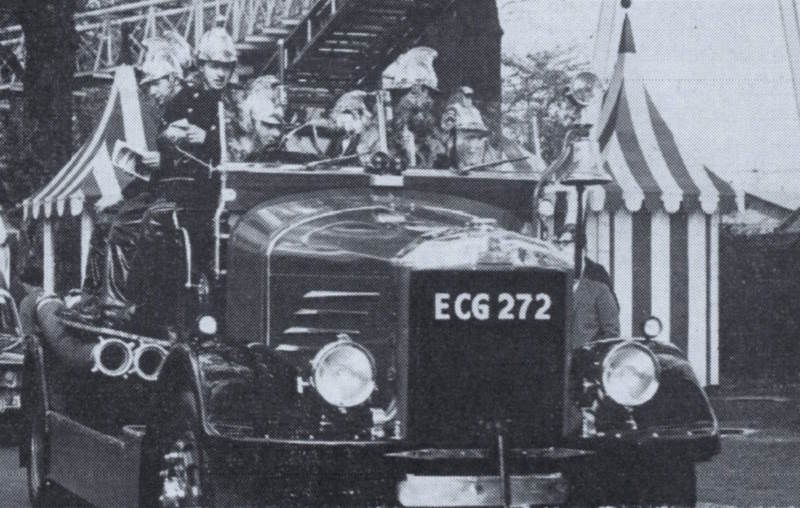
Heading off to Brighton from Battersea Park in 1968
The bulk of the restoration work took 2-3 years, however some initial restoration work was completed to make it road worthy and ready for its first London to Brighton run on 5 May 1968.
Eight of the apprentices crewed the Dennis 'Big 4' fire engine, setting off from Battersea Park, to participate in the rally organised by the Historic Commercial Vehicles Club.
Image: From June 1968 edition of London Fire Brigade's internal newspaper the 'London Fireman'.
From rallies to weddings
The restored vehicle went on to win many trophies and awards. These were proudly displayed in a purpose-built cabinet in the canteen at the Ruislip Workshop.
The former apprentices also remember hearing that after they had left LFB a team was then specially recruited to continue to maintain and run the vehicle. It continued to be an important part of events, including more rallies and demonstrations, and even at Brigade weddings.
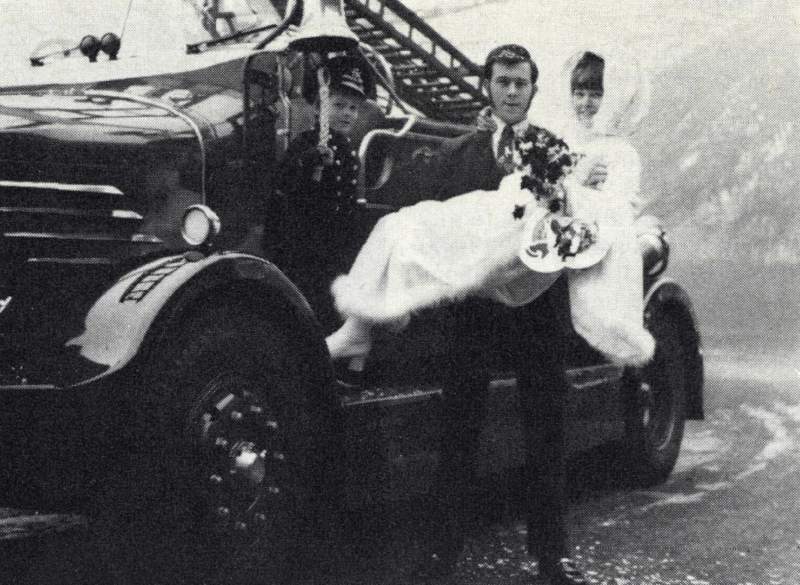
Wedding bells in 1971
The recently restored vehicle was a focal point at this firefighter's wedding in 1971, transporting the newly weds from the ceremony to their reception in Wandsworth, as reported in the March edition of London Fire Brigade's internal newspaper the 'London Fireman'.
Did you know?
Different rhythms rung on the brass hand-bell let everyone around know that the fire engine was on its way.
Positive experiences and the apprentices' legacy
From working on the Dennis 'Big 4' fire engine to being setup with certain skills that would benefit their work in the future, the former apprentices shared their experiences and achievements during their time in the workshops.
A brief history of the Dennis Big 4 vehicle type
The Dennis ‘Big 4’ Fire Engine Pump was developed in the 1930s. The Dennis Brothers originally made bicycles in the 1890s, but by the First World War they were firmly established as suppliers of fire engines to London Fire Brigade.
The vehicle was a popular and versatile machine that was favoured abroad as well as in Britain.
Key technical features of this vehicle:
- It is known as a 'Big 4' in reference to its engine size, designed with a 4-cylinder overhead valve engine.
- The turbine pump at the rear of the vehicle was able to pump up to 700 gallons of water per minute.
- Two benches transported the firefighters, on what was known as the ‘Braidwood’ body. This design was used by James Braidwood, Superintendent of the London Fire Engine Establishment (1833-1861). The crew, of four firefighters minimum, six firefighters maximum, sat facing outwards, a development of the horse-drawn fire engines dating as far back as 1820.
- The brass hand-rung bell. With the increasing traffic in London, it was necessary for fire engines to have bells to sound their arrival. There were rhythms for specific situations, for example short bursts of ringing were used when the fire engine approached a junction, to make sure any other engines could be easily heard and avoided.
- The vehicle carried a variety of equipment including delivery hoses (20 lengths), canvas hose with rubber lining, suction hoses, ladders (two hook ladders), 30ft extension ladder, and 60 gallons of water carried inside.
- Speed – 60/70 horse power, 45mph.
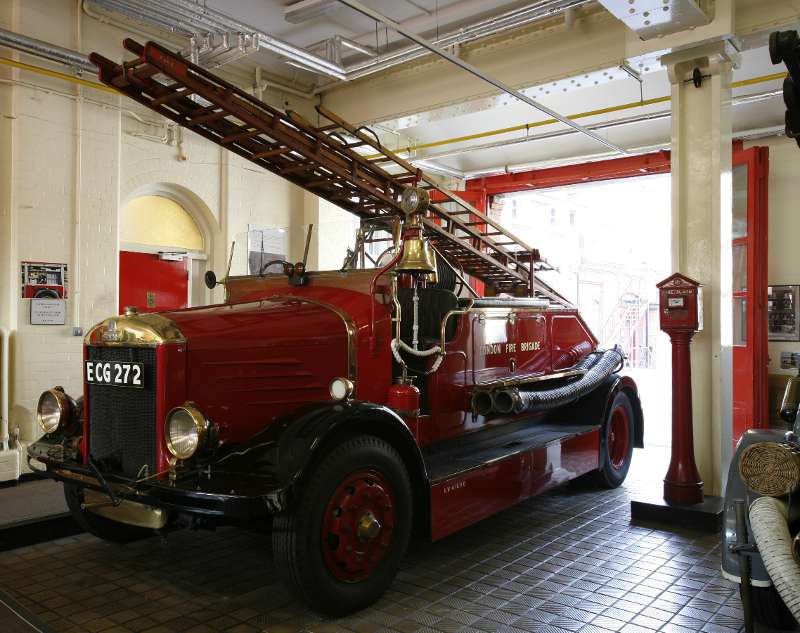
The vehicle becomes part of the LFB Museum collection
The Dennis ‘Big 4’ entered the museum’s collection in the late 1990s. It was an important addition to the collection, enriching the story of the development of motorised vehicles in the fire service.
This image shows the vehicle displayed in the appliance bay area of the old LFB Museum at Winchester House (now closed) and was very popular with visitors.
I did include the 'Big 4' on my tours
The bell was useful to explain the various "rings" that were used and how this changed over the years. Secondly, the vehicle lent itself to explaining how the pump was engaged and how water was drawn up. People were also interested in how the crew held on to the vehicle when it was on a call!
David R, LFB Museum Volunteer
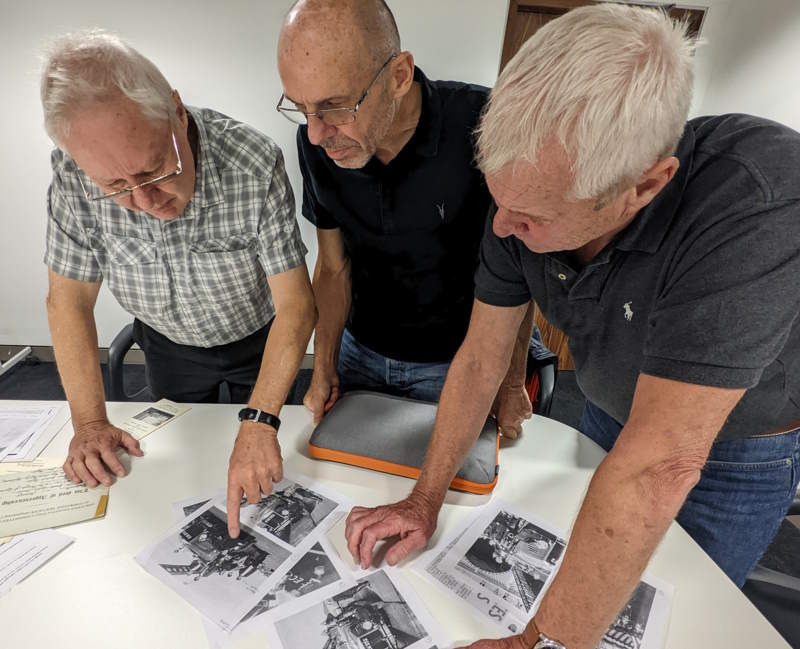
Featuring in the new LFB Museum displays
Although this vehicle was not originally part of the LFB fleet, it is built to the same specification as examples used by LFB during the 1930s and 1940s. The work carried out by the apprentice team used authentic skills and processes to restore the vehicle, which means that it still has historical value within the museum's collection as a ‘good example’ of this type of vehicle, as used by the Brigade in the past.
The Dennis 'Big 4' will be an essential part of the re-developed vehicles displays when the new LFB Museum reopens in the future. The important stories we have recorded from the former apprentices Bob, Terry and Ian will now be woven into the information that will accompany the vehicle to explain more about this amazing machine.
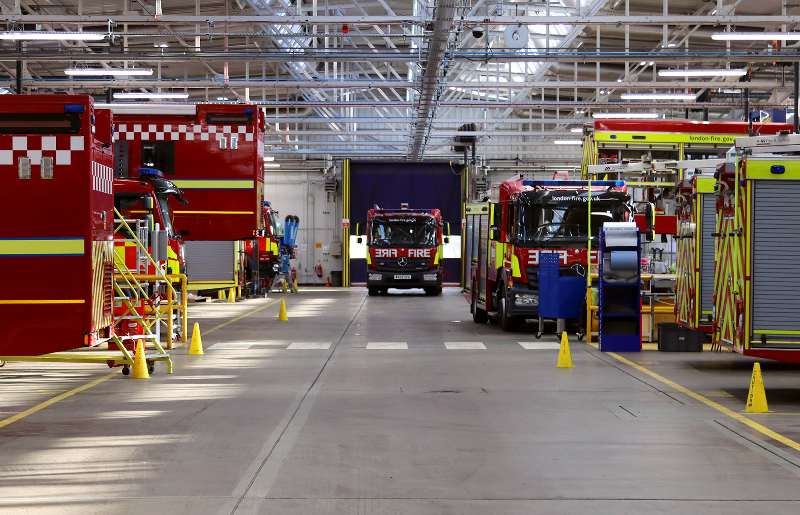
The workshops today
Ruislip is still home to the Brigade's vehicle workshop. This is where the fleet of emergency vehicles are maintained, repaired and refitted.
The workshops are also where all the Brigade's new vehicles begin their career when they join the fleet.
It might not be the most well known part of the Brigade, but the teams based here play an essential role in keeping London's fire engines on the road.
Image: From London Fire Brigade
Thanks and acknowledgements
This exhibition was made possible with the contributions of former workshop apprentices Bob, Terry and Ian, who shared their stories and images from their time at London Fire Brigade. Additional input from our Museum Volunteers was also appreciated.
Let us know what you thought
Please complete our survey to let us know what you thought of this exhibition, and more importantly what you’d like to see from the museum in the future.